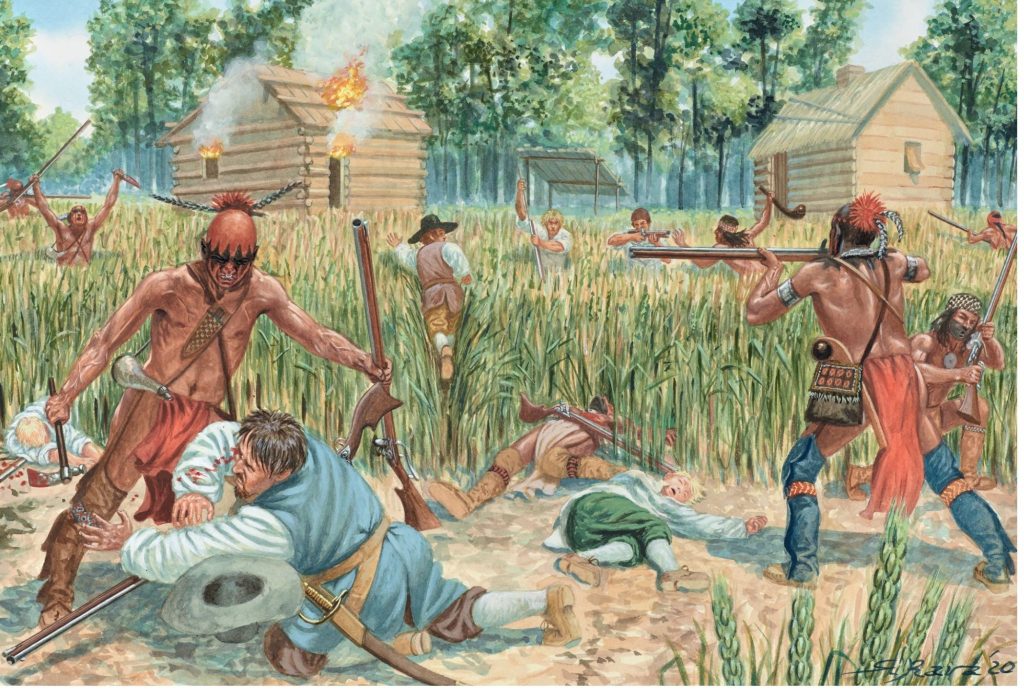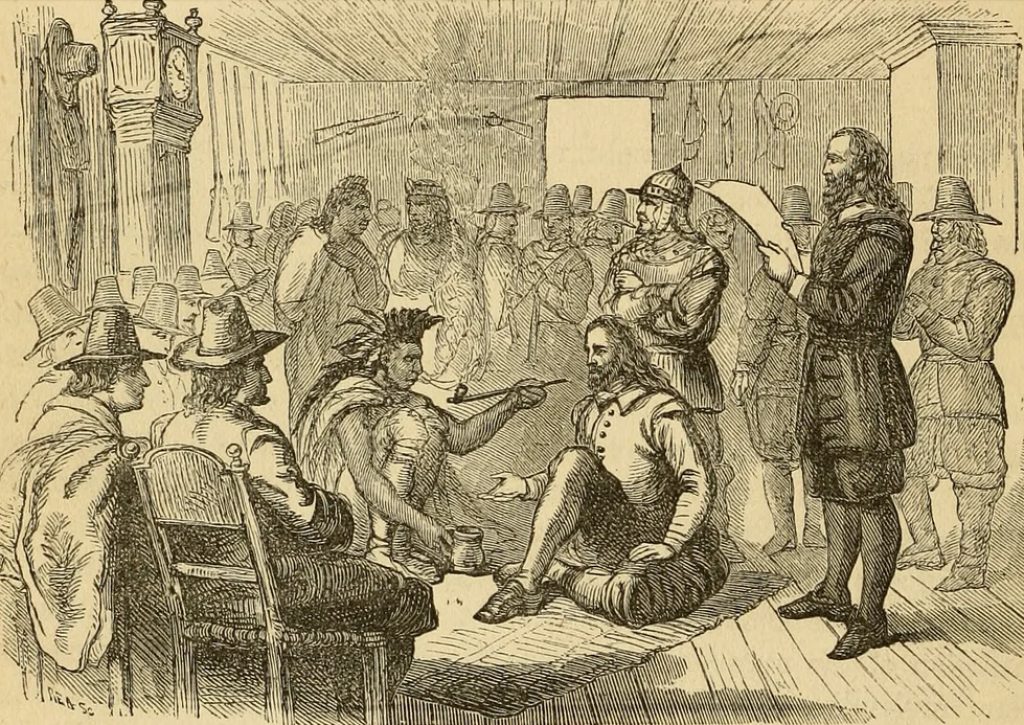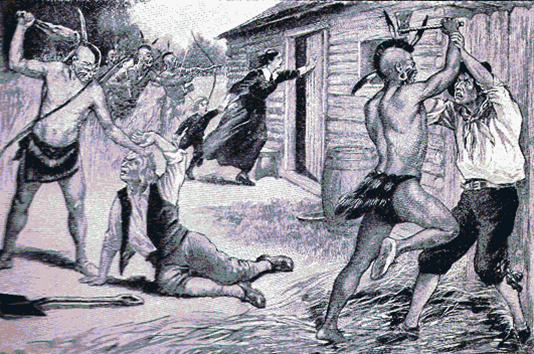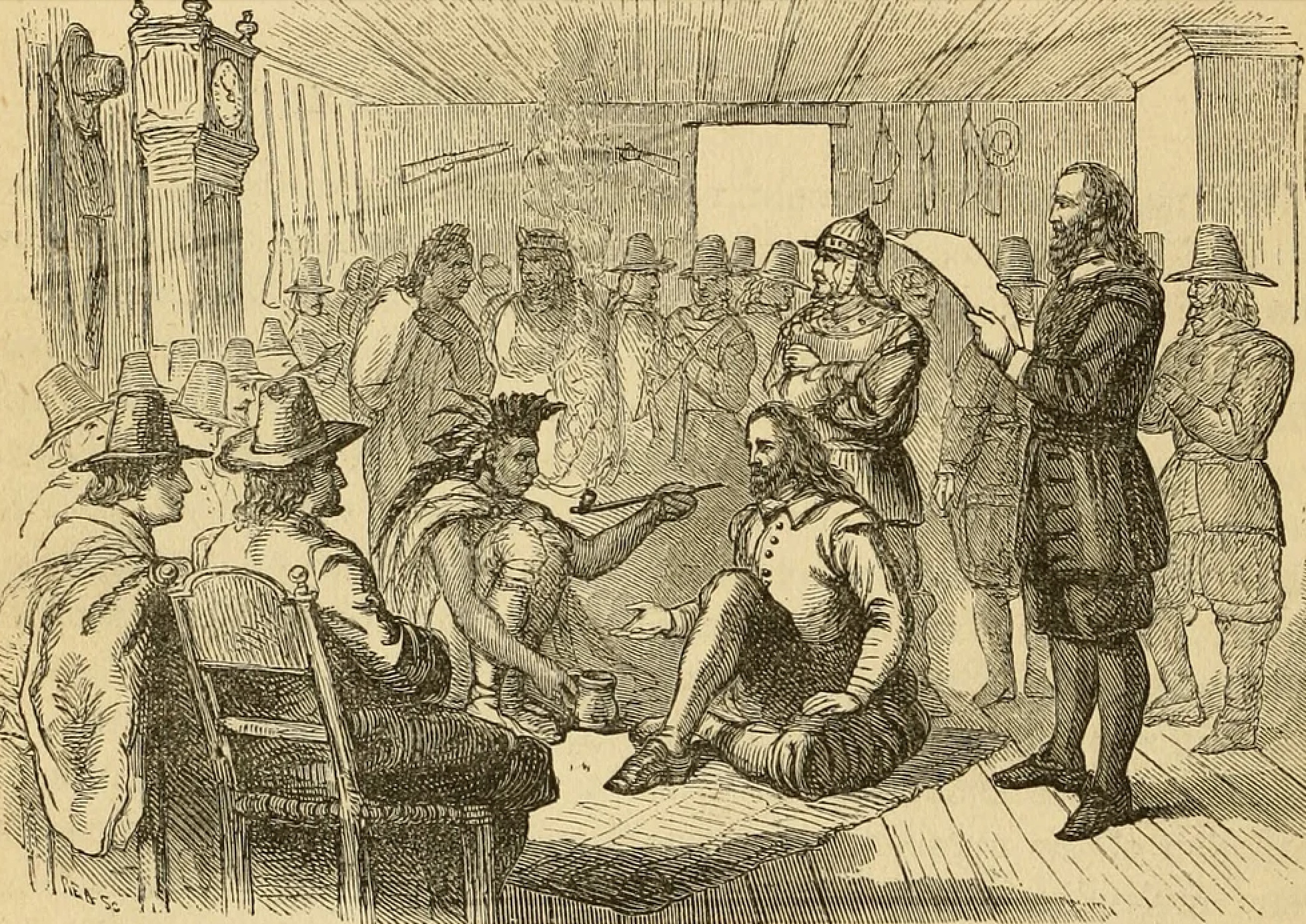Introduction

King Philip’s War, a significant yet often overlooked conflict, was a pivotal moment in early American history.
King Philip’s War, also called the First Indian War, the Great Narragansett War, or Metacom’s Rebellion, happened in southern New England from 1675 to 1676.
This brutal war pitted Native American tribes against English settlers, forever altering the landscape of New England.
It was the Native Americans’ final attempt to resist English control and stop them from taking over their land.
The war got its name from the Wampanoag chief Metacom, also known as King Philip, who led the fourteen-month-long, brutal conflict.
Understanding King Philip’s War helps us grasp the complexities of colonial and Native American relations and the profound impact of this war on both groups.
The war had lasting implications, influencing future interactions and shaping the socio-political landscape of the region.
Definition of King Philip’s War

King Philip’s War, also known as Metacom’s War, was an armed conflict between indigenous inhabitants of New England and English colonists and their Native American allies.
The war is named after King Philip, the English name given to Metacom, the Wampanoag chief who led the Native American forces.
It lasted from 1675 to 1676, making it one of the earliest and bloodiest conflicts between Native Americans and European settlers in North America.
The war began as a result of mounting tensions between the settlers and the Native American tribes, primarily due to the aggressive expansionist policies of the colonists.
Metacom was the second son of Wampanoag chief Massasoit, who had made a peace treaty with the colonists at Plymouth Plantation. But this agreement didn’t stop the colonists from taking over more Indian lands.
After Massasoit died in 1661, his oldest son Wamsutta (later called Alexander) took over. In 1662, the English suspected Alexander of plotting war and arrested him. He died during questioning, and Metacom (now known as Philip) came to power.
Metacom, or King Philip, assumed leadership of the Wampanoag Confederacy after his father’s death and his brother’s suspicious demise, which only served to heighten his distrust and hostility towards the settlers.
Under his leadership, several tribes united in an effort to drive out the colonists, leading to a series of devastating battles.
After the Pequot War (1636-1637), the New England colonies of Plymouth, Massachusetts Bay, Connecticut, and New Haven realized they needed to team up to defend against common enemies. After a lot of discussions, they formed the New England Confederation on May 19, 1643.
In January 1675, a Christian Indian named John Sassamon warned Plymouth Colony that Philip planned to attack English settlements. The English ignored the warning and soon found Sassamon’s murdered body in a frozen pond.
A jury of colonists and Indians found three Wampanoag men guilty of Sassamon’s murder and hanged them on June 8, 1675. This execution enraged Philip, who the English accused of plotting Sassamon’s murder. This set off tensions between the Wampanoag and the colonists, leading to war.
Over the years, the New England Confederation fought against the Wampanoag, Nipmuck, Pocumtuck, and Narragansett tribes during King Philip’s War. However, the Mohegan and Mohawk tribes sided with the English.
The Causes of King Philip’s War

The causes of King Philip’s War are rooted in deep-seated tensions and disputes between Native American tribes and the colonists. The primary issues included:
- Territorial and Economic Disputes
As more English settlers arrived, they encroached on Native American lands, leading to conflicts over territory and resources.
The colonists’ expansion threatened the way of life and the autonomy of the Native tribes.
The settlers’ relentless demand for land pushed the Native Americans to the brink, as they saw their hunting grounds and farmlands steadily reduced.
- Cultural Clashes
The differing worldviews and customs of the Native Americans and the English settlers often led to misunderstandings and conflicts.
The colonists’ attempts to impose their culture and religion on the Native Americans exacerbated tensions.
The English settlers’ insistence on converting the Native Americans to Christianity and their dismissal of native customs and governance further fueled resentment.
- Leadership of King Philip
Metacom, known to the English as King Philip, sought to resist the growing influence of the English settlers.
Following the death of his father, Massasoit, and his brother, Wamsutta, under suspicious circumstances, Metacom became increasingly determined to push back against the colonists.
His leadership was characterized by a series of strategic alliances and coordinated attacks, which aimed to halt the encroachment of the settlers and preserve the Native American way of life.
Key Battles and Strategies of King Philip’s War
The war was marked by several significant battles and strategic maneuvers on both sides. Here are some of the key moments:
Battle of Bloody Brook
The Battle of Bloody Brook took place on September 12, 1675, near present-day Deerfield, Massachusetts.
A group of colonial militia escorting a convoy of wagons carrying harvests was ambushed by Native American forces.
The attack resulted in a devastating loss for the colonists, with many being killed.
This battle highlighted the Native Americans’ effective use of guerrilla tactics and their intimate knowledge of the local terrain.
The ambush at Bloody Brook was a stark reminder of the dangers faced by the colonists as they ventured further into Native American territories.
Great Swamp Fight
One of the most pivotal and brutal confrontations occurred on December 19, 1675, known as the Great Swamp Fight.
Colonial forces attacked a fortified Narragansett village in Rhode Island, leading to a fierce battle in harsh winter conditions.
The colonists burned the village, resulting in significant casualties among the Narragansett people, including women and children.
This battle severely weakened the Narragansett tribe and shifted the momentum in favor of the colonists.
The Great Swamp Fight was a turning point in the war, demonstrating the colonists’ determination to crush Native American resistance at any cost.
Winter Campaign
The winter campaign of 1675-1676 saw the colonists employing a strategy of attrition.
They launched numerous raids on Native American villages, destroying food supplies and shelters, forcing many tribes to retreat into the wilderness during the harsh winter months.
This strategy aimed to weaken the Native American forces by depriving them of resources and reducing their ability to sustain prolonged resistance.
The harsh conditions of the winter campaign took a heavy toll on the Native American populations, who struggled to survive without adequate shelter and food.
The Legacy of King Philip’s War in American History
The aftermath of King Philip’s War had profound and lasting effects on both Native American tribes and the colonial settlers.
The war resulted in a significant loss of life and disruption of Native American communities.
Many tribes were decimated, and survivors were often sold into slavery or forced to flee their ancestral lands.
The destruction wrought by the war left many Native American communities fragmented and struggling to rebuild.
For the colonists, the war led to changes in policies and attitudes towards Native Americans.
The victory bolstered the settlers’ sense of security and justified further expansion into Native lands.
The war also strained colonial resources and economies, leading to changes in military and administrative approaches in the colonies.
The colonists’ triumph in King Philip’s War marked a significant step in their consolidation of power in New England and laid the groundwork for future territorial expansion.
Significance of King Philip’s War
King Philip’s War is remembered for its unparalleled destruction and its role in shaping the future of colonial America.
The war caused widespread devastation, with numerous towns and villages burned, and a significant portion of the population killed or displaced.
The conflict also marked the end of significant Native American resistance in New England, paving the way for unchecked colonial expansion.
The war had a profound impact on the social, economic, and political landscape of the region.
It not only decimated the Native American population but also led to a lasting animosity between the colonists and the indigenous people.
The heavy casualties and destruction caused by the war severely disrupted the daily lives of the survivors, both Native American and colonial.
Furthermore, the war’s aftermath saw a reshuffling of power dynamics in the region, with the colonists solidifying their control and expanding their territories with less opposition.
The psychological impact of the war was also significant, leaving a lasting legacy of fear and mistrust.
This brutal conflict underscored the harsh realities of colonial expansion and the inevitable clash of cultures, highlighting the complex and often tragic interactions between European settlers and Native American tribes.
In summary, King Philip’s War was a pivotal event that reshaped the trajectory of New England, setting the stage for future developments in the colonial era.
Unparalleled Destruction
The scale of destruction during King Philip’s War was immense.
Entire communities were wiped out, and the landscape of New England was forever altered.
The war inflicted heavy casualties on both sides, with estimates suggesting that up to 30% of the Native American population in the region was killed.
The loss of life, combined with the economic and social disruptions caused by the war, had a lasting impact on the development of the colonies.
The war’s legacy of violence and destruction underscored the brutal realities of colonial expansion and the deep-seated animosities that fueled the conflict.
The scars left by King Philip’s War were felt for generations, influencing the course of American history and shaping the interactions between Native Americans and European settlers for years to come.
Conclusion
King Philip’s War stands as a stark reminder of the complexities and tragedies of early American history.
The conflict between Native Americans and colonists was driven by a mix of cultural misunderstandings, territorial disputes, and economic pressures.
The war’s brutal battles and significant casualties left an indelible mark on New England, shaping the future interactions between Native Americans and European settlers.
The war also serves as a testament to the resilience and determination of the Native American tribes who fought to preserve their lands and way of life.
Despite the devastating losses, the legacy of their resistance continues to be remembered and honored.
King Philip’s War remains a pivotal chapter in the story of America’s founding, offering valuable lessons about the costs of conflict and the enduring impact of historical events.
FAQs
- What was King Philip’s War?
King Philip’s War was an armed conflict between Native American tribes and English colonists in New England from 1675 to 1676. It is named after King Philip, the English name for Metacom, the Wampanoag chief who led the Native American forces.
- What caused King Philip’s War?
The war was caused by territorial and economic disputes, cultural clashes, and the leadership of King Philip, who sought to resist the growing influence and expansion of English settlers.
- What were the major battles of King Philip’s War?
Major battles included the Battle of Bloody Brook, the Great Swamp Fight, and various engagements during the winter campaign of 1675-1676.
- What was the outcome of King Philip’s War?
The war resulted in significant loss of life and the destruction of many Native American communities. It also led to changes in colonial policies and expansion, with the colonists ultimately prevailing.
- How did King Philip’s War affect Native American tribes?
The war decimated many Native American tribes, leading to loss of life, displacement, and enslavement of survivors. It also marked the end of significant Native resistance in New England.









